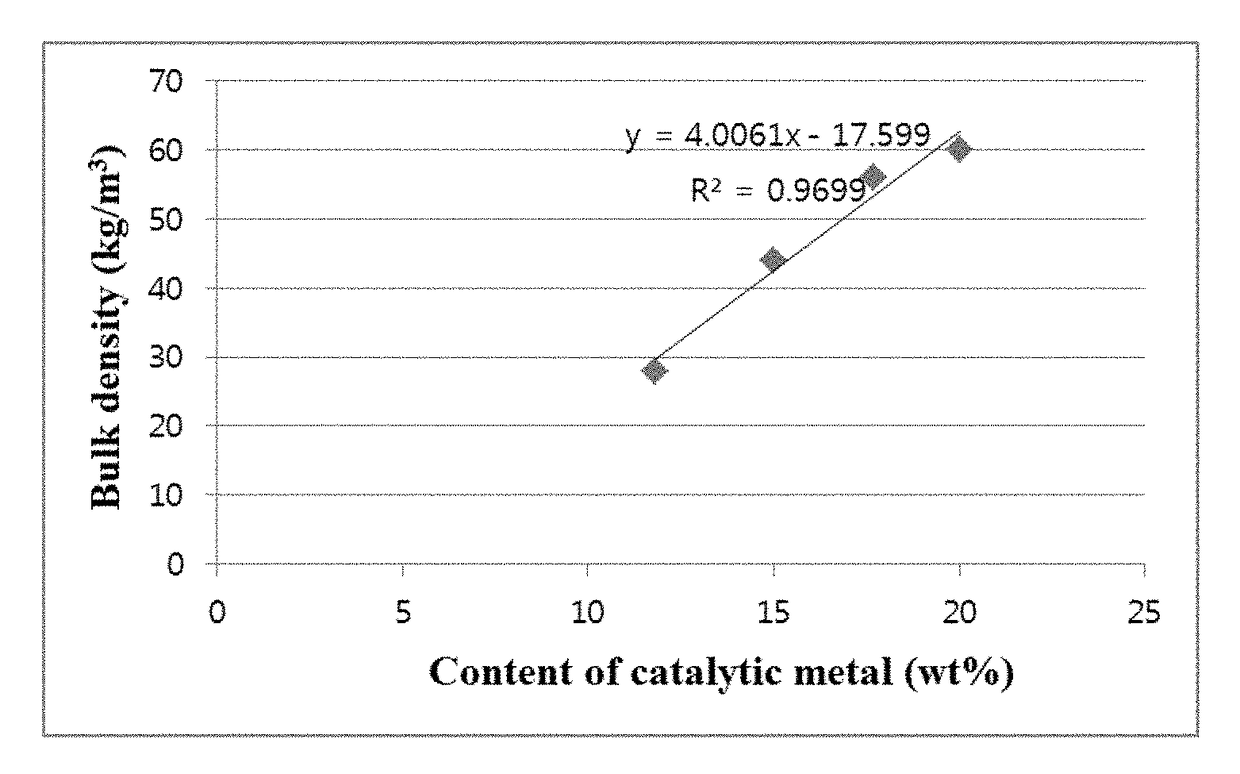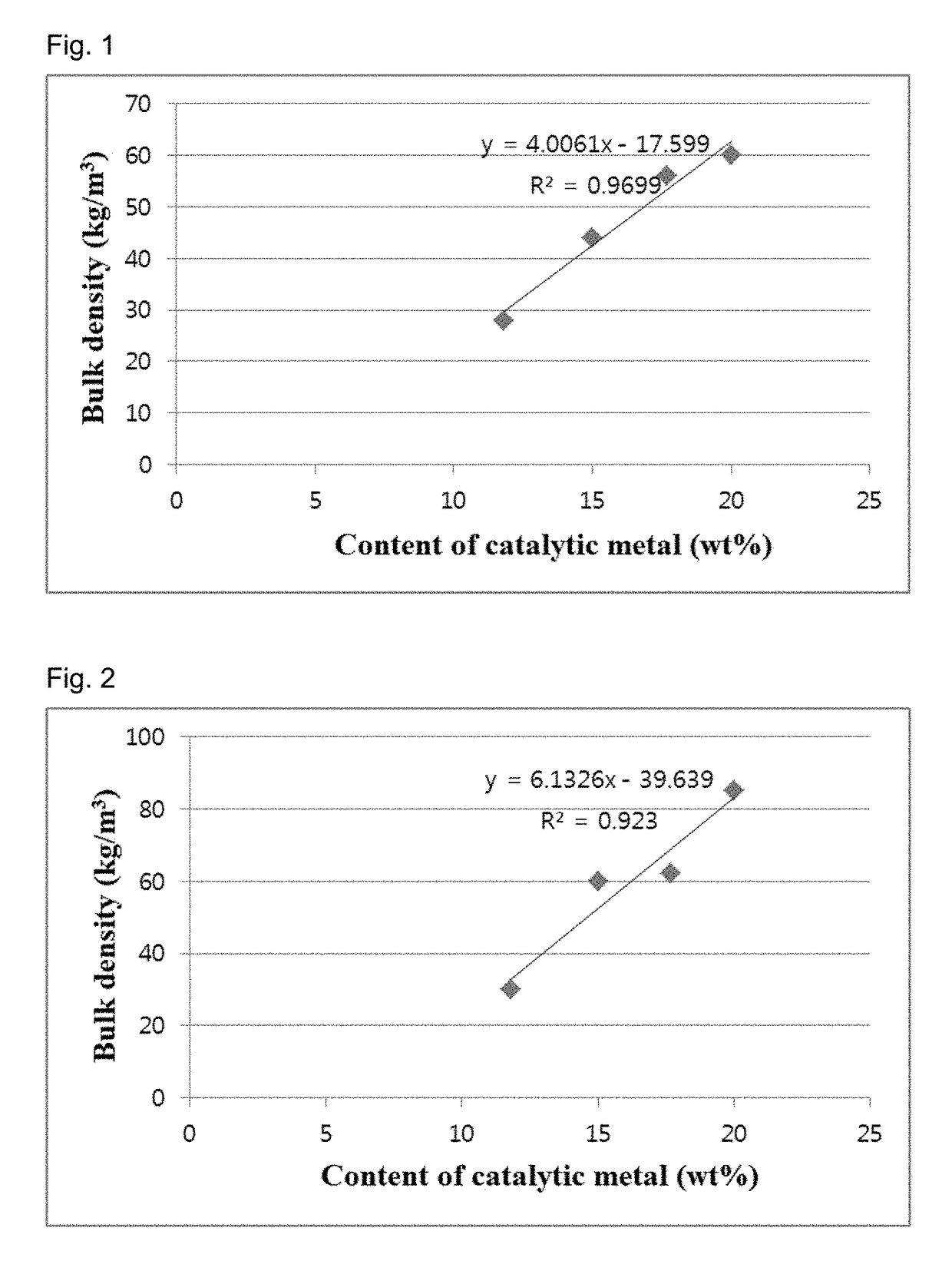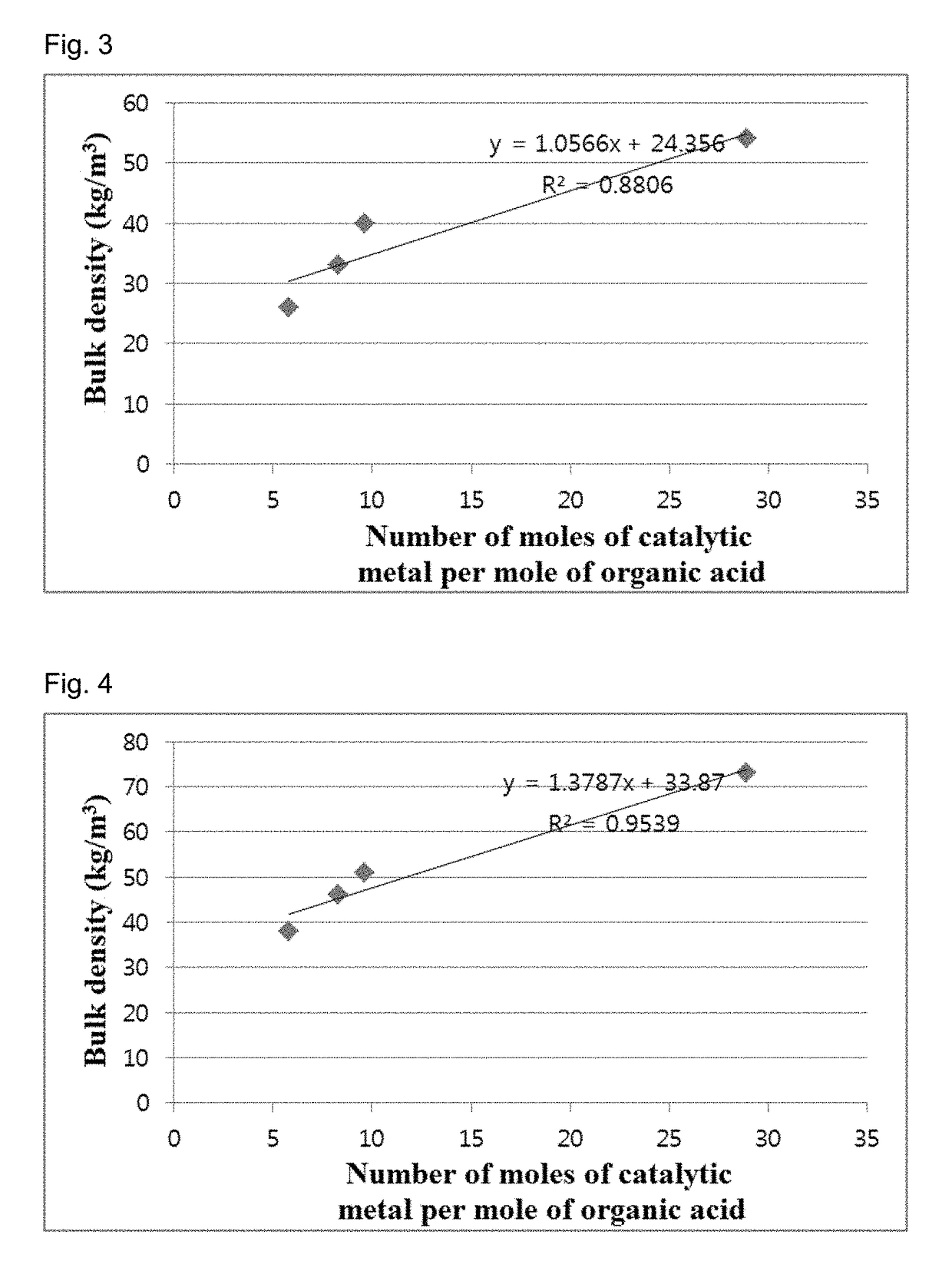Method for controlling bulk density of carbon nanotube agglomerate
a carbon nanotube and aggregate technology, applied in the direction of catalyst activation/preparation, metal/metal-oxide/metal-hydroxide catalyst, physical/chemical process catalyst, etc., can solve the problem of limited industrial application and use of carbon nanotubes, high arc production costs or expensive laser equipment, and the limitation of direct control of the diameter and length of carbon nanotubes to industrially applicable dimensions. , to achieve the effect of improving physical properties and being easy to disperse in
- Summary
- Abstract
- Description
- Claims
- Application Information
AI Technical Summary
Benefits of technology
Problems solved by technology
Method used
Image
Examples
example 1
[0103]A. Preparation of Aqueous Solution of Graphitization Metal Catalyst Precursor
[0104]2,424 g of Fe(NO3)2.6H2O, a precursor of Fe as a graphitization catalyst, was added to 2,000 g of water in flask A. The aqueous metal solution was observed to be clear and free of precipitates.
[0105]B. Preparation of Support
[0106]Aluminum trihydroxide (Al(OH)3, ATH) as an aluminum-based support was primarily calcined at 300-500° C. for 4 h to obtain a support. 2,000 g of the support was placed in flask B. XRD analysis revealed the presence of 40 wt % or more of AlO(OH) in the calcined support.
[0107]C. Preparation of Supported Catalyst
[0108]4,424 g of the solution in flask A was added to flask B such that the number of moles of Fe was 30 moles when the number of moles of the support (2,000 g) was assumed to be 100 moles. The mixture was weighed and aged with stirring in a thermostatic bath at 60° C. for 5 min to sufficiently support the graphitization catalytic metal precursor on ATH400. The aged...
example 2
[0115]Changes in the bulk density of carbon nanotube aggregates were observed with varying temperatures for catalyst calcination. Catalysts were prepared in the same manner as in Example 1, except that Co / V (10:1 molar ratio) was used instead of Fe, the primary calcination temperature was fixed to 400° C., the secondary calcination was performed at different temperatures of 600-700° C., and citric acid was added in a molar ratio of 1:23 relative to Co. Carbon nanotube aggregates were synthesized using the catalysts in the same manner as in Example 1. When the reaction times were 1 h and 2 h, the yields and bulk densities of the carbon nanotube aggregates are shown in Table 2.
[0116]
TABLE 2Temperaturefor catalystReactionBulkcalcinationtimeYielddensityEntryCatalyst(° C.)(h)(times)(kg / m3)1CoV / ATH400-600600118.5132236.31442CoV / ATH400-650650126.3242255.53563CoV / ATH400-675675125.5044257.00604CoV / ATH400-700700124.0337251.0052
[0117]The results in Table 2 are graphically shown in FIG. 6. The ...
example 3
[0118]Catalysts were prepared in the same manner as in Example 2, except that the secondary calcination temperature was fixed to 675° C. and the Co content was changed as shown in Table 3. Carbon nanotube aggregates were synthesized using the catalysts in the same manner as in Example 2. When the reaction times were 1 h and 2 h, the yields and bulk densities of the carbon nanotube aggregates are shown in Table 3.
[0119]
TABLE 3CoReactionBulkcontenttimeYielddensityEntryCatalyst(wt %)(h)(times)(kg / m3)1CoV / ATH400-67511.8114.7728223.90302CoV / ATH400-67515125.5044257.00603CoV / ATH400-67517.7121.6756240.04624CoV / ATH400-67520121.3660241.9485
[0120]The results in Table 3 are graphically shown in FIG. 7. FIG. 8 shows SEM images of the carbon nanotube aggregates.
PUM
| Property | Measurement | Unit |
|---|---|---|
| temperature | aaaaa | aaaaa |
| temperature | aaaaa | aaaaa |
| density | aaaaa | aaaaa |
Abstract
Description
Claims
Application Information
 Login to View More
Login to View More - R&D
- Intellectual Property
- Life Sciences
- Materials
- Tech Scout
- Unparalleled Data Quality
- Higher Quality Content
- 60% Fewer Hallucinations
Browse by: Latest US Patents, China's latest patents, Technical Efficacy Thesaurus, Application Domain, Technology Topic, Popular Technical Reports.
© 2025 PatSnap. All rights reserved.Legal|Privacy policy|Modern Slavery Act Transparency Statement|Sitemap|About US| Contact US: help@patsnap.com



